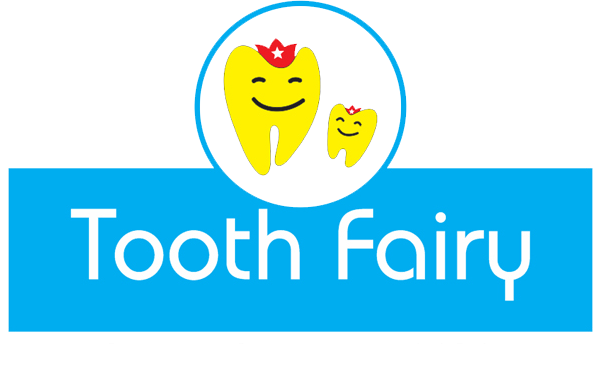Dental caries (cavities) is the most prevalent childhood disease, with a prevalence higher than chickenpox, mumps, and typhoid put together!. It is also the most common untreated medical condition in India!!. It is also one of the most common reasons for the loss of school hours for children!!!
It is also preventable! So… yes. Regular oral healthcare checkups go a long way in identifying oral diseases early and in preventing and managing them more effectively. That was the short answer. For details, read on…
What is Dental Caries?
The AAPD(American Academy of Pediatric Dentistry) defines caries as “Biofilm-mediated Acid-demineralization of enamel and dentine”. Caries are currently considered to be caused by the bacterial plaque (biofilm) that forms on the teeth which has a complex structure and consists of several types of bacteria that are suspended in a matrix.
- This biofilm is sticky and adheres to the enamel and dentine of the teeth.
- They consume the simple carbohydrates (sugars) in our diets and lead to the formation of acid (lactic acid is produced as an end product of bacterial glycolysis).
- This acid gradually dissolves the enamel and dentine (acid demineralization) to form ‘cavities’.
Once the surface of a tooth is breached, the bacteria can gain access to the soft tissue of the tooth (dental pulp which contains blood supply and nerve supply of the tooth) and cause an infection.
Is caries preventable?
Yes! Good oral hygiene and educating children and parents about healthy dietary choices can go a long way in preventing caries. Further, even after a cavity ‘just starts’, its progress into an infection can be completely repaired or arrested (depending on the stage of the cavity) by following adequate preventive means!
What are the different levels of prevention?
1.Primordial prevention
The disease is prevented from ever occurring in the first place! This can be done by educating kids early about oral hygiene practices and the use of adequate preventive measures such as fluorides and dental sealants.
2. Primary prevention
The disease is identified early and its spread is halted. An early-stage cavity is called a ‘white spot’ as the surface looks chalky white due to the loss of minerals (calcium and phosphate) from the tooth enamel. This can be prevented by early diagnosis and measures like surface sealing in addition to good home care and hygiene practices.
3. Secondary prevention
The disease process is identified after the surface is breached, but the nerve involvement has not yet occurred. In this case, management will involve cleaning out the decayed portion of the tooth and replacing it with a restoration or a ‘filling’
4. Tertiary prevention
The disease is identified quite late in the progression. However, a full-blown infection has not set in. In such cases, a “root canal treatment” is performed and the tooth is ‘saved’ from being pulled out.
This is more like a disability limitation where extraction of the tooth is avoided!
The most ideal form of prevention is the primordial and primary prevention modalities.
A periodic (ideally once in 6 months) checkup will help identify dental disease early and achieve higher levels of prevention. The adage – an ounce of prevention is better than a pound of cure holds good!
What is the cost of prevention vs the cost of cure? [Depending upon the location and whether the dentist is a general dental surgeon or a Specialist Pedodontics]
- A typical check-up and preventive education cost about 200 to 500 rupees in an average urban setup in India.
- Twice-a-year check-up – INR 1000 per child. (on average Rs. 500 per visit)
- A simple cavity ‘filling’ – INR 500 to 2000! (Per tooth)
- A root canal treatment and crown – INR 5000 to 7000!! (Per tooth)
- Extraction and Space maintenance – INR 6000 to 8000!!! (Per tooth)
[These prices are indicative of an average Indian urban setup. They may vary vastly based on your surgeon’s experience and expertise, techniques, and materials of choice]
As we go down the road of prevention, the procedures get progressively lengthy, progressively uncomfortable, and progressively more expensive.

India needs a national School Dental Healthcare Program!
With a sharp rise in school are population, rise in consumerism, and negative urban food practice trends, dental caries incidence is on the rise. A good national program is a need of the hour and will go a long way in bridging the disparity in the public-private health gap that exists today.
Without it, the gap is only bound to rise with devastating consequences.
What are the consequences of early childhood dental disease?
Oral health is a gateway to Medical health. Untreated cavities can lead to:
- Early tooth loss
- Mal aligned permanent teeth
- Speech impediments
- Psychological and behavioral impact
- Low height/weight gain during growing years
- Poor school performance
- Loss of school hours
- Inability to chew
- Infections in rare cases spread to lungs/sinuses/brain, etc.
Dental health is often underappreciated.
What can school programs achieve?
School programs can involve a pediatric dentist and a public health dentist to specifically formulate strategies to prevent childhood oral and dental disease depending on regional and local variables in consideration.
Based on the variables, simple strategies can be designed in schools at various levels of prevention. Such a program can be very effective in lowering the costs needed to otherwise treat children in private setups. It can drastically improve the quality of life of our children.

